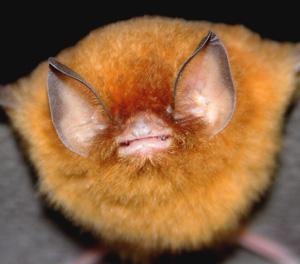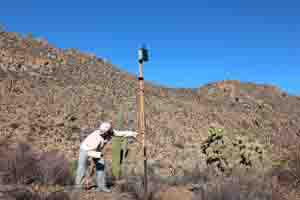Veronica Zamora-Gutierrez
To understand how climate and land use changes may affect current and future bat distributions in Mexico and to determine the role of protected areas as biodiversity refugees.
The major causes of ecosystem degradation and biodiversity loss are anthropogenic land transformation and climate change. Previous studies have assessed the effects of either climate or land use change on species distributions for different taxa and regions but a few have considered the relative importance of both. Climate and land use changes may affect species and regions in different ways and their effects could interact.

Natalus stramineus captured at Mina Jabalina, Nayarit.
In some cases the two threats may not occur together in the same places, while in other areas there may be a higher co-occurrence, reducing the ability of species to adapt to changes. For example, studies have shown that some species have been declining in spite of climatic suitability increasing across their distributional ranges. This is in part due to isolation caused by increasing habitat fragmentation preventing species colonizing new suitable habitats. Establishing effective protected areas reduces habitat and biodiversity loss by reducing and preventing land conversion, but is less effective in mitigating the effects of climate change. This project will contribute to the understanding of the current spatial distribution of Mexican bat species and how those distributions may change in the future. I generated a presence-only database of bat species records in Mexico and investigated biases in these data to identify environmentally unique zones without bat information. Based on the biases found, I will collect further data from the field using acoustic and live trapping methods to fill in those gaps.

Placing a bat detector at Los Cirios Biosphere Reserve, Baja California.
Additionally, I will record bat calls directly from the trapped animals to start building a reference acoustic library. Using all the collected data, I will build species distribution models using climate and land cover variables. Once current distribution models have been completed, I will combine their results with several downscaled General Circulation Models, a land cover model and use three IPCC emission scenarios to project future climate and bat distributions for the years of 2020, 2050 and 2080. I will estimate future changes in range for all bat species and for three main trophic guilds (frugivores, nectarivores and insectivores) in Mexico, then I will estimate how habitat suitability changes focusing only in protected areas. This project is important in a region that is one of the most biodiverse in the world, yet with one of the highest rates of biodiversity loss and where climate and land cover are expected to change dramatically.